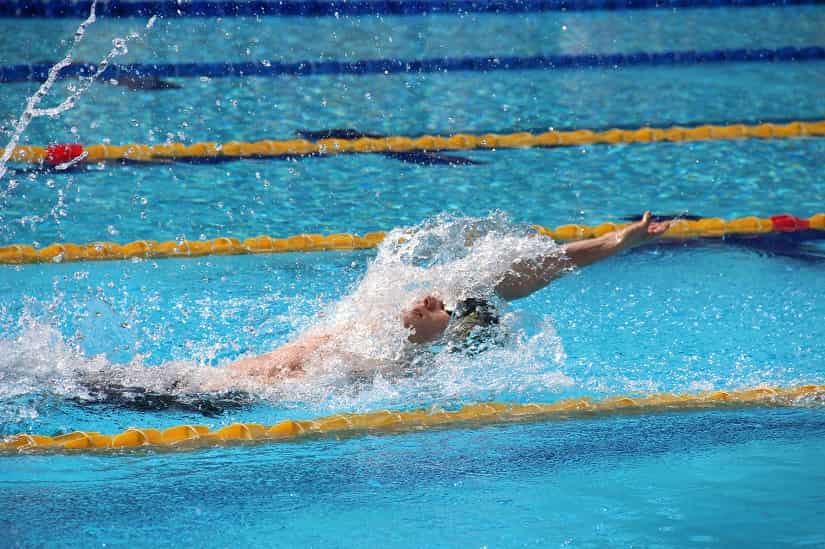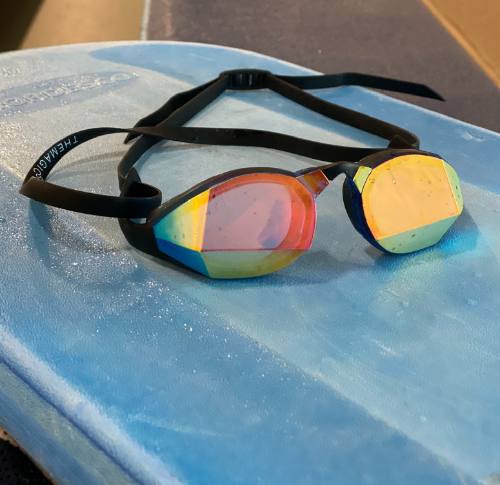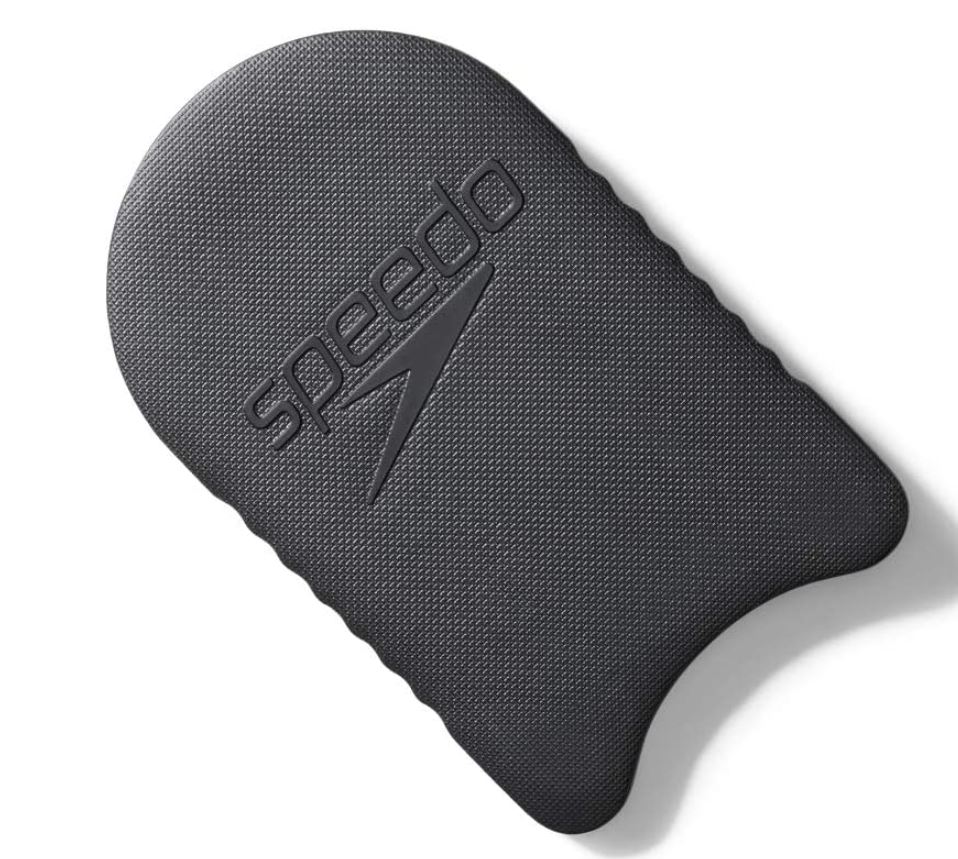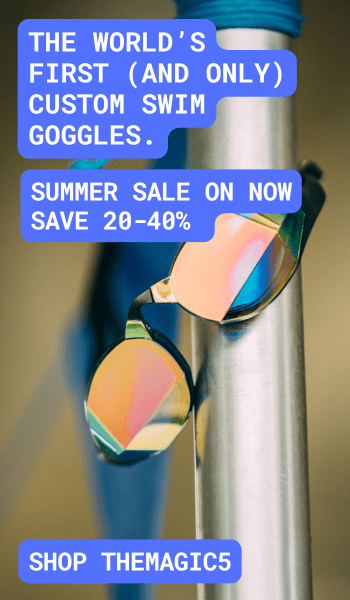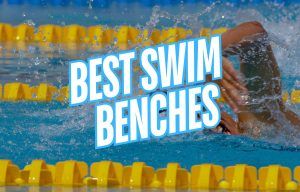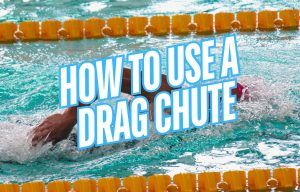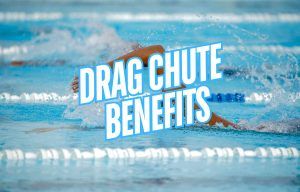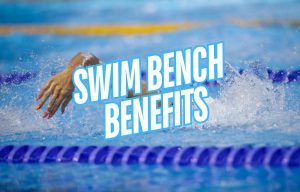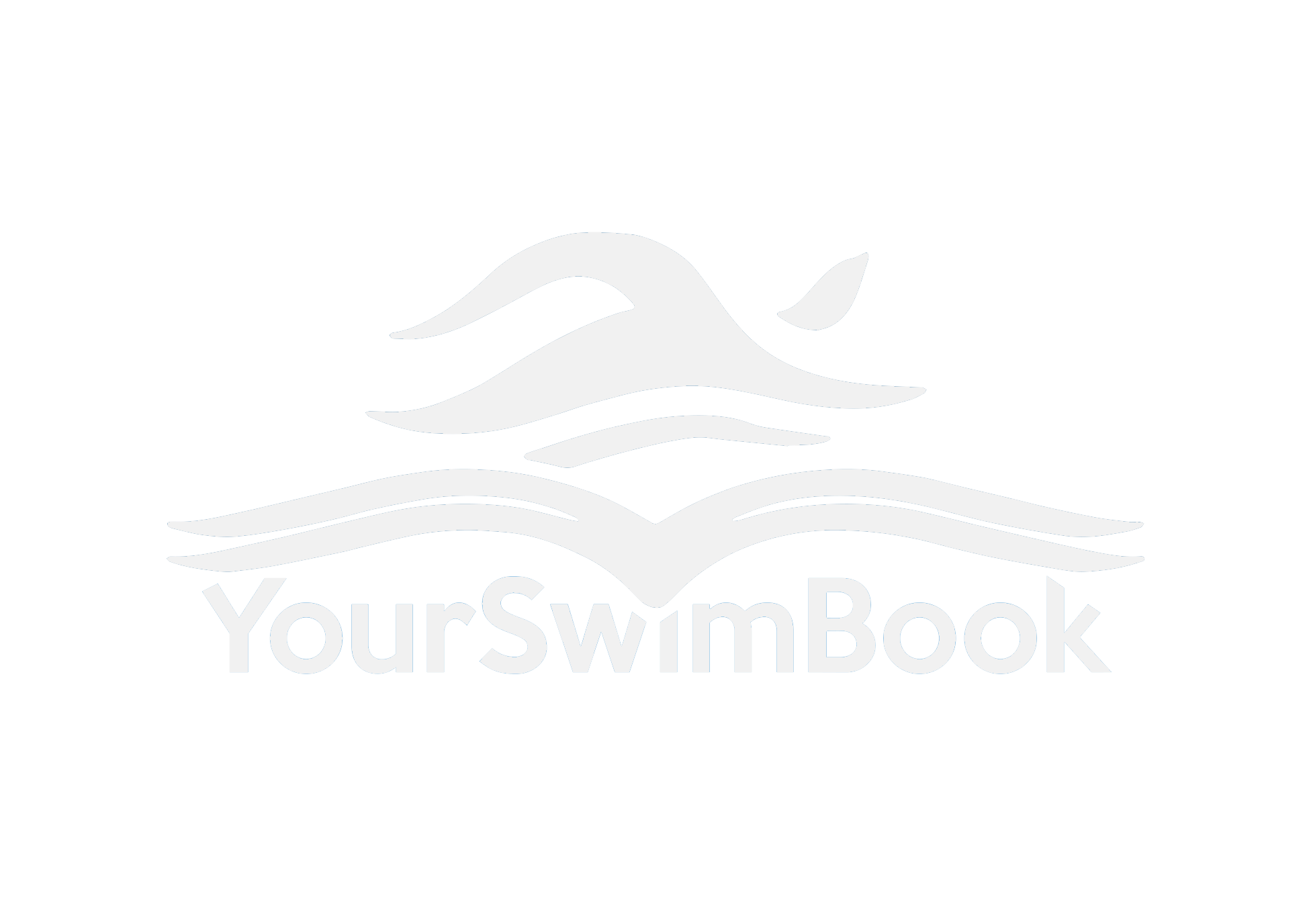Ready to level up your swim bag? Here is the essential swimming gear every serious swimmer needs for success in the pool.
Having the right swimming gear is essential for success in the pool. Whether you are looking to improve your swim workouts, become a stronger swimmer, or simply want to swim to without leaky goggles, having the right gear is essential.
In our round-up of the most essential gear for swimmers, we cover everything from comfortable, leak-free swim goggles to different swim aids and storage options for your swim gear.
Let’s jump in!
The Essential Gear for Swimmers
The essential gear for swimmers includes:
- Swim Goggles
- Kickboard
- Pull Buoy
- Swim Fins
- Swim Paddles
- Swimmers Snorkel
- Tempo Trainer
- Ankle Band
- Drag Chute
- Mesh Bag
Next, we will look at each type of swimming gear and also give you our recommendations for hitting the pool with confidence.
1. Swim Goggles
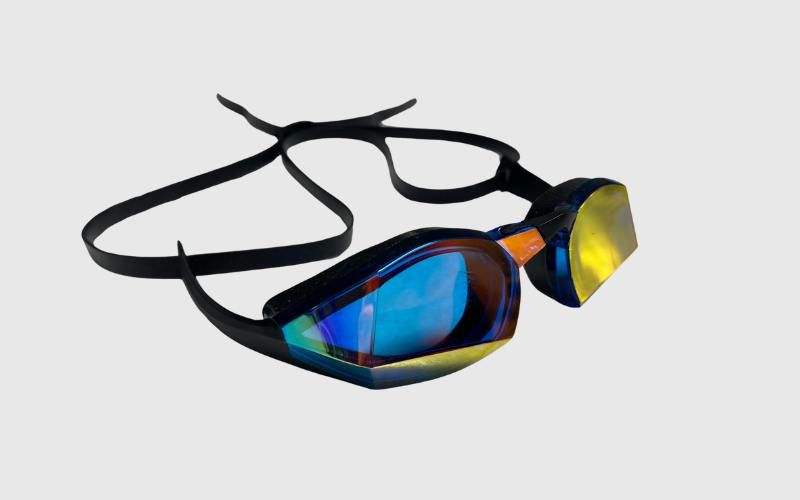
Swim goggles are an essential type of swimming gear, not just for the safety features and enhancing underwater vision, but, in many respects, as a training aid.
Swim goggles are primarily designed to help you see underwater. This helps swimmers properly time and improve their flip turns. See the backstroke flags. Watch out for other swimmers in the lane. And finish each race on a full stroke.
But swim goggles are also a training accessory because they help you properly see the pace clock, whether an analog clock mounted on the wall or a swim watch strapped to your wrist.
And the right swim goggles also help you perform your best on race day, giving you excellent peripheral vision to see the competition. A “fast” goggle also has a slim profile that reduces drag and stays firmly in place when you dive into the water.
The most comfortable and leak-free swim goggles on the market are TheMagic5 goggles, which feature a customized gasket made specifically for the contours and shape of your face.
The goggles are available in many different colors and tints and are ideal for serious swimmers who want the best of the best when it comes to comfort, performance, and looks.
+ Custom fit for your face
+ Comfortable for extended wear and reducing headaches
+ Extremely slim lens profile
+ Available in 11 colors/tints and discounts on bundles
2. Kickboard
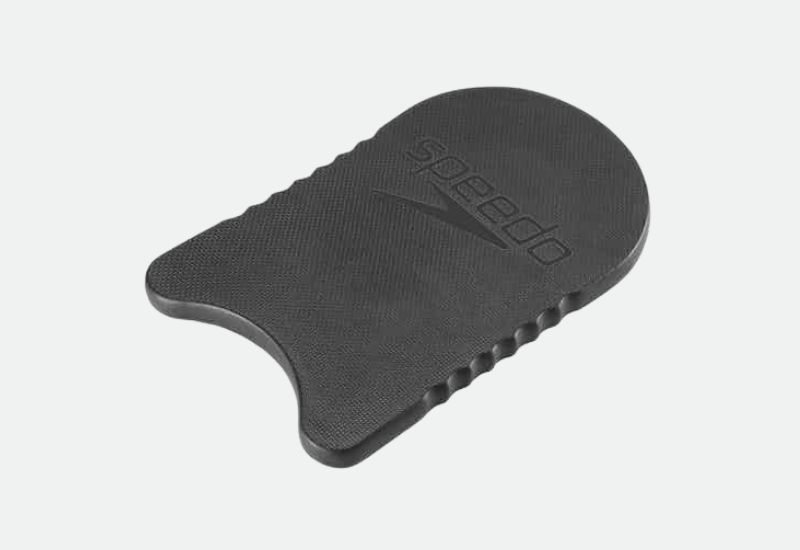
The old-school kickboard is my favorite piece of swimming gear for better swim workouts at the pool.
Why?
Kickboards allow you to target your lower body exclusively, build a bigger “engine”, and doing kick sets are a great way to break up the monotony of swimming lap after lap.
Your legs are the biggest muscles in the body, so a well-trained kick will inevitably help you be a better overall swimmer.
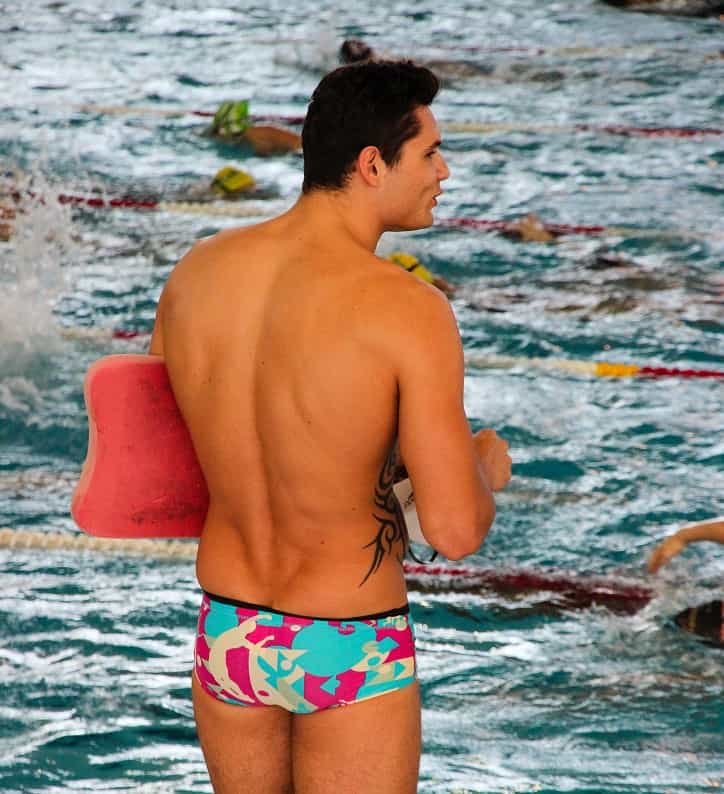
Having good kick fitness in the water—you can’t fake a good kick with lots of dryland workouts, just ask any triathlete, who tends to have the fittest legs on the planet and yet still struggles with kicking in the water—is imperative for accelerating, changing speeds, and finishing your races strong.
Although having a really powerful kick might not directly give you a metric-ton of added propulsion, better kick fitness will help you maintain better body position, improve your ability to finish, and even execute a more powerful pulling motion.
The best swimming kickboard continues to be the Speedo Team Kickboard, which comes in three colors, is made of EVA foam, and has contoured edges and grips to keep your hands parked in place when kicking your brains out.
3. Pull Buoy
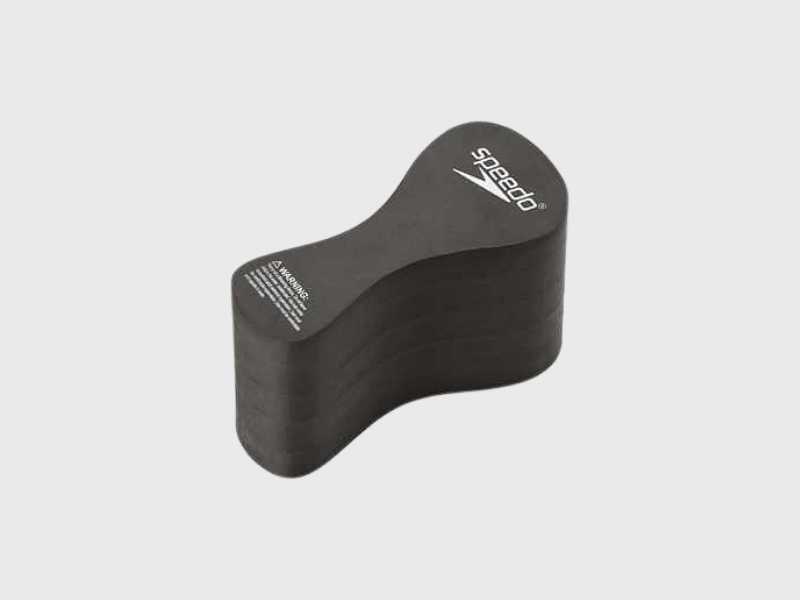
While the kickboard helps you focus on the kicking motion of your swimming, the pull buoy does this job with the pulling motion.
Pull buoys are basically a specially contoured foam floaty that you stick between your thighs, immobilizing your legs and making the upper body do all the work.
Pull buoys are excellent for showing you proper body position—high hips in the water is the most efficient way to move through the water—and allow you to zero in on every phase of the pull, from the catch to when your hand exits at your hip.
I especially like using my pull buoy for sets and workouts that are focused on breath control (a pull buoy is an almost essential aid for helping swimmers breathe properly in the water).
For example, I will always do my “Lungbuster” sets with a pull buoy (10x200m freestyle pull, breathing every 3-5-7-9 strokes by 50m).
Pull buoys are inexpensive, are available in a variety of shapes (some have two cylinders connected with straps, for example), and provide variable levels of buoyancy.
The Speedo Team Pull Buoy nails the basics when it comes to the most comfortable pull buoys for swimmers—it’s comfortable, doesn’t chafe the thighs, and the bell end shape means you can change how much buoyancy it gives you by flipping it upside down.
4. Swim Fins
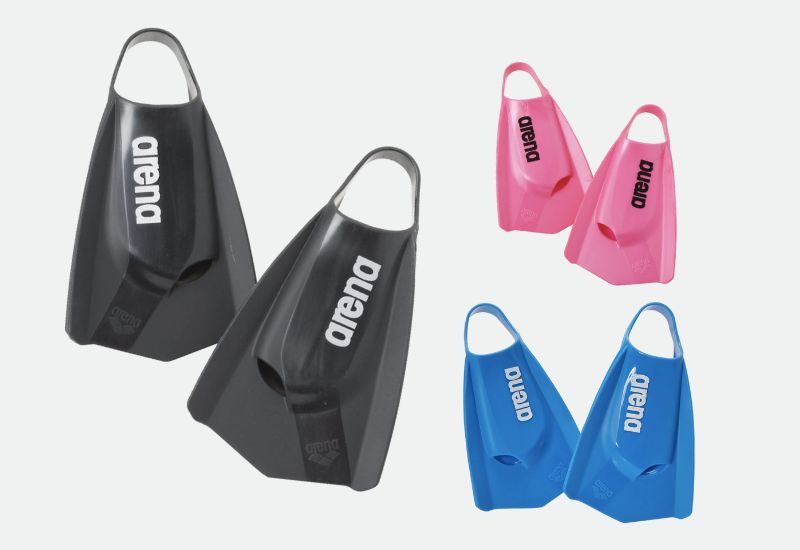
No list of swimming gear would be complete without what 4/5 dentists would agree are the favorite swim accessories of anyone who swum a lap…
Swim fins!
Strapping on a pair of swim fins can do a few different things to make you a better swimmer: They will help you develop more flexibility and range of motion in your ankles and feet, can help sensitize you to swimming at race pace or faster, and can teach you how to breathe properly and maintain proper technique while swimming at high velocity.
Swimming and kicking with fins is something else too—a whole lot of fun.
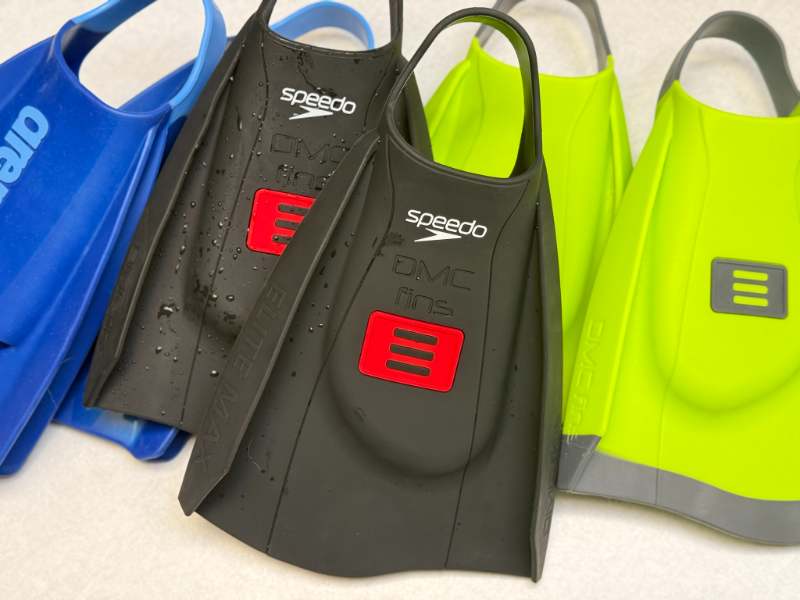
The temptation is to get bigger when picking out a pair of fins (check out our buyer’s guide to swimmer’s fins here), but shorter is actually better.
Why?
Because when you get the massive diving fins with a two-foot blade it slows down your kicking RPM way too much.
You want a quick kick, but with just enough of a blade to give you a boost.
Arena makes the best training swim fins, the Powerfins Pro that are durable, comfortable (made with silicone–doesn’t blister and chafe like rubber), and used by elite swimmers including Sarah Sjostrom of Sweden and Bruno Fratus of Brazil.
5. Swim Paddles
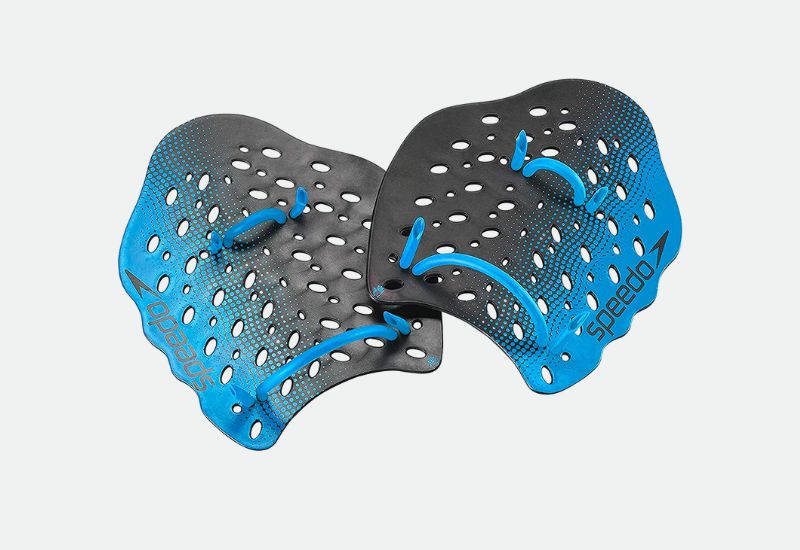
Swim paddles are the upper body version of swim fins. By adding extra surface area to your hands, you can pull more water, thereby becoming a stronger swimmer and also swimming significantly faster.
There are lots of ways to incorporate swim paddles into your daily swim workouts, from doing sculling to improve your feel for the water (and strengthen your forearms and “catch”) to straight-up power work.
See also: 7 Best Swim Paddles for Getting Stronger and Swimming Faster
Like any resistance tool—paddles do increase the muscular demand around your elbows and shoulders, so use progressively and don’t overdo it with paddle size—make sure you are nailing the fundamentals before adding load.
Swim paddles come in a few different shapes, sizes, and strap choices (the FINIS Agility Paddle, for instance, is strapless), but my go-to paddle over the years are the Speedo Power Plus Paddles.
They come in a wide variety of sizes (and colors), the rubber tubbing lasts a long time, and you can switch out the wrist straps and solely use a finger strap, which will encourage you to use a clean hand entry when swimming.
6. Swimmer’s snorkel.
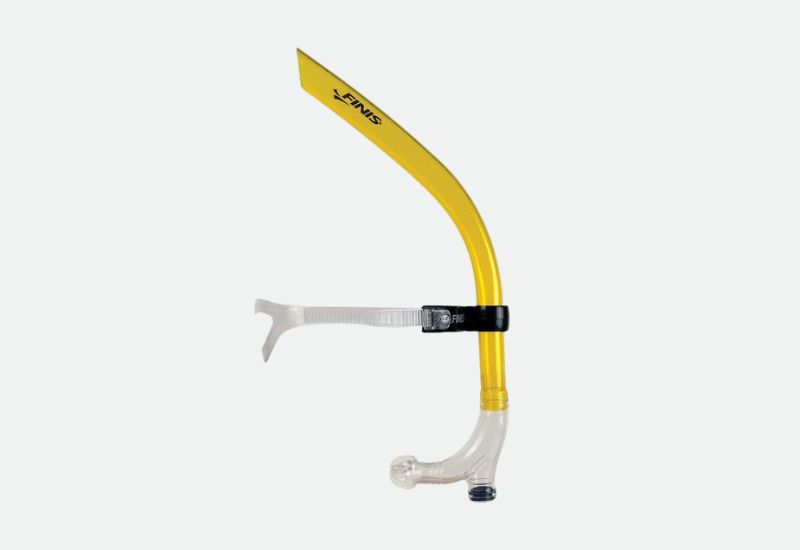
Watching a local swim practice recently the swimmers were freestyle kicking back and forth without any splash, the only sign of disturbance in the water the brightly-colored snorkels that cut silently through the water.
Although they have been patented since 1994 (by FINIS), the front-mounted snorkel only recently exploded in popularity across pool decks. These days, you would be hard-pressed not to find one in an athlete’s collection of swim gear.
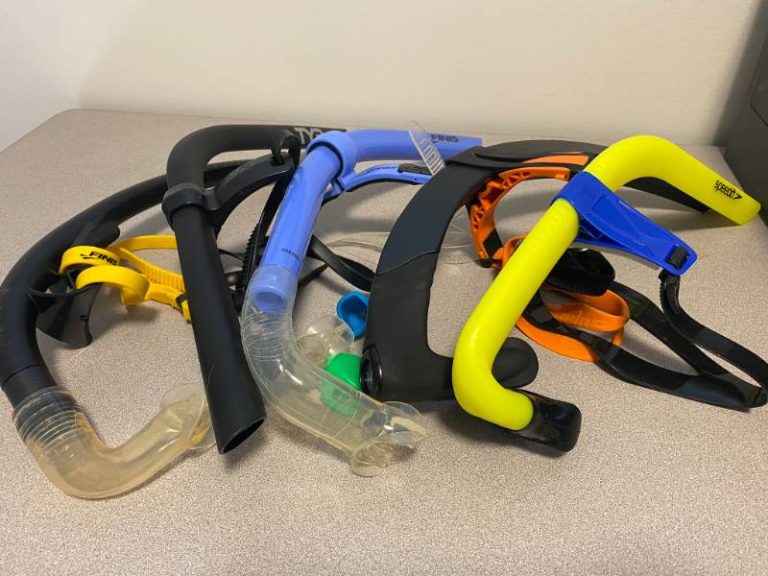
I wield mine with kick sets (particularly when doing long course swimming), and find that it is particularly helpful for developing a more balanced and full stroke. Why does this matter?
Because muscle imbalances are one of the leading causes of swimmers shoulder. An easy way to combat this–short of mercilessly breathing bilaterally during training–is to strap your face up to a swimmer’s snorkel.
The swimmer’s snorkel can be used to improve just about anything you can think of in the water—from developing a more balanced stroke, to doing kick work that mimics proper body position, to doing sculling properly (and not with your head up).
They are cheap, versatile, and will help you become a better swimmer.
The best swim snorkel for swimmers is the FINIS Original Swimmer’s Snorkel:
Note: Save 20% at FINIS with discount code LANE6
7. FINIS Tempo Trainer Pro.
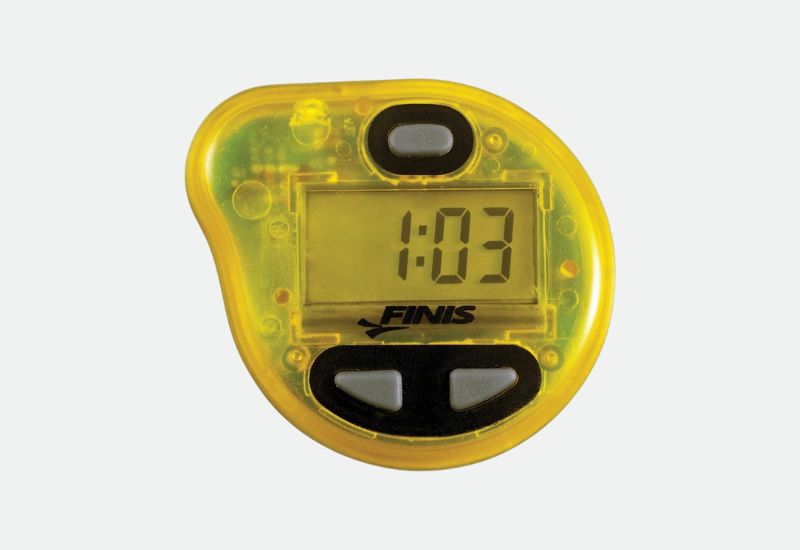
Ready to take your swim training beyond “survival” mode to crush it and conquer it mode?
The FINIS Tempo Trainer Pro is an awesome tool that can help you nail your stroke tempo in the water.
There are a few different ways coaches and swimmers use the Finis Tempo Trainer Pro, but the one I like most is setting the desired stroke rate into it and then doing quality reps in the pool at my goal stroke tempo.
This is race simulation at its peak and is the kind of mega high-grade training that will best prepare you for competition.
After all, if you have belted out a million 25’s at your desired stroke tempo you can feel pretty confident that your body and stroke will be ready to perform at the big swim meet.
Moreover, when you dive into the water on race day you will be able to swim on virtually auto-pilot because your body has already done the target swim and tempo so many times. So yeah, in terms of prepping for fast racing the TTP is pretty much a no-brainer.
While there are plenty of fancy-pants tools like swim smartwatches and waterproof fitness trackers that can give you more information, at the end of the day, if you can hit your tempo, the results are going to take care of themselves in competition.
Note: Save 20% at FINIS with discount code LANE6
8. Ankle band
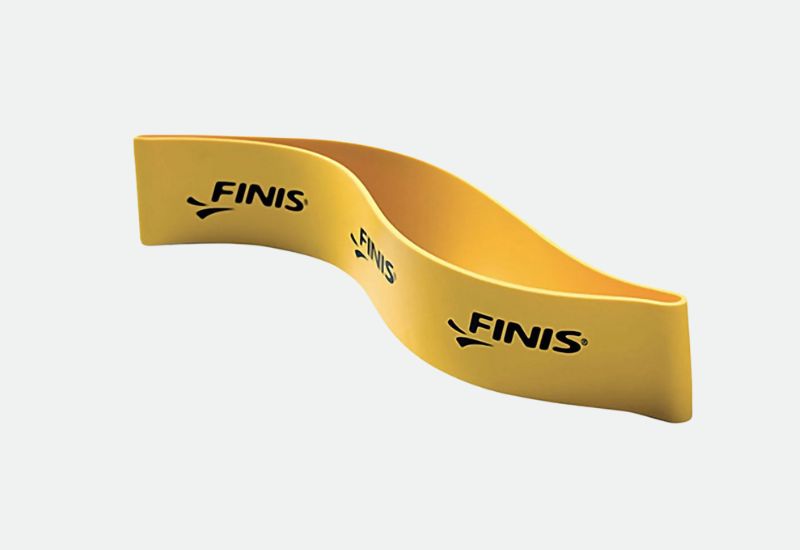
As far as low-tech goes, a simple little rubber band is as Flintstone as it gets.
If you want to add some serious power and torque to your pulling motion, this super simple addition to your arsenal is your go-to.
There is a reason that most swimmers groan when coach writes up a set with a band—it’s hard.
It forces you to keep your arms moving at a balanced and even rate (no resting with an over-glide, in other words), and it will make your legs sink, so you have to be much more cognizant of keeping your hips high in the water and your face down.
However, keep in mind that using a band while swimming should be avoided if you are suffering from a rabid case of swimmer’s shoulder, and it should be progressed into. Think of a band as high level resistance training—any deficiency in your stroke will only be made worse by its use.
Outside of the power benefits, swimming with a band around your ankles will help balance out your stroke, increase your stroke rate, reinforce the critical need of having a high elbow during your catch, and will be a stark reminder to keep your hips nice and high in the water.
FINIS produces an ankle band that is durable that has found its way into my own swim bag, and is less than $10.
9. Swim parachutes
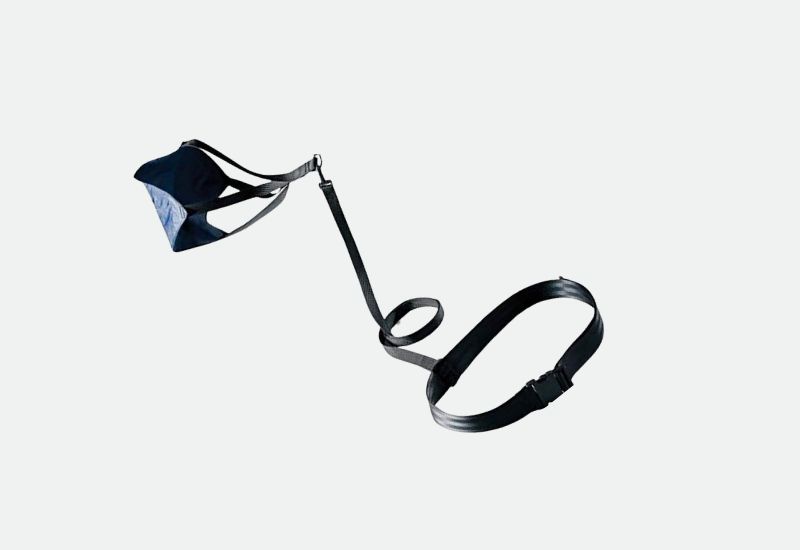
Swim parachutes are a way to create extra drag and get stronger in the water. They are literally mini parachutes designed specifically for swimmers that attach via a nylon strap to your waist. The parachute catches water behind you, increasing the resistance you face in the water.
Studies1,2 with swimmers found that short bursts of training with a swim parachute (and swim paddles) increased swim-specific strength and even helped swimmers develop a more balanced and fluid stroke.
I love using swim parachutes (I’ve got a medium-size one for long-course swimming and an extra-large ‘chute for short course, max power reps) as they force me to really nail that early vertical forearm at the top of the swim stroke.
Plus, do a few reps with a parachute, and then jump into a couple of laps of fast swimming—you will feel an instant boost of speed and feel like you got shot out of a chlorinated cannon!
While most swim companies, including Speedo, Sporti, and TYR, make parachutes for swimmers, my favorites are made by FINIS.
They come in either red (medium-sized—8” wide) or black (large—12” wide), have adjustable belts, and are made of nylon and polyester, which last just about forever in swim pools.
Note: Save 20% at FINIS with discount code LANE6
10. Swim gear bag
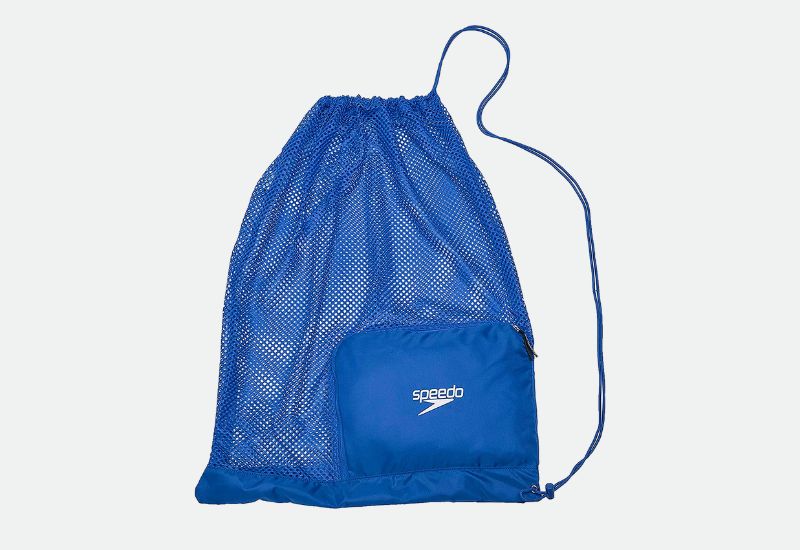
Okay, now that you’ve thrown down some hard cash on some awesome new swim gear, it’s time to invest a few more dollars into a swim gear bag.
Mesh bags (also known as swim gear bags) are the ultimate swimming equipment bag for swimmers.
For starters, the bag holds your stuff all in one place so that your gear isn’t strewn all over the pool deck at the end of your lane.
Second, storing your paddles, fins, pull buoy, etc, in a mesh swim bag instead of your regular swim bag means everything else in your swim bag (smartphone, keys, clothing, etc) stays dry.
And third, mesh bags are perfect for storing swim gear between practices because they allow moisture to evaporate and airflow to move through your swim equipment, drying it out and preventing mold growth.
Speedo’s Medium Mesh Swim Gear Bag—yes, I know, another Speed product—is the transportation for your stuff. It’s got a breathable mesh fabric and a zippered picket for packing smaller things that you don’t want to get lost in the depths of your swim bag (earplugs, swim goggles, and so on).
Swimming Gear – FAQs
What gear do you need to swim?
The only real essentials for swimming are a swimsuit and swim goggles. A swimsuit, because, well, swimming nude is frowned upon, and swim goggles allow you to see where you are going and help keep your eyes from getting itchy and red from chloramine exposure.
You can still get a great swim workout with just the essentials. But swimming gear allows you to mix things up, target your upper or lower body, do resistance training, and improve your technique.
What gear do swimmers need for racing?
The equipment that swimmers need to race fast in competition include a fast tech suit, racing goggles, and a racing swim cap.
Other essentials can include a swim parka (to stay warm between races) foam roller to stay loose, resistance for activation, and a mental skills workbook to keep your mental game tight.
Where is the best place to buy swimming gear?
There are plenty of places, online and off, that carry lots of swimming gear. Dick’s Sporting Goods, Wal-Mart, and even your local Target will carry some swimming gear.
Hands-down the best place to shop for swim gear online, however, is over at Swim Outlet.
They support the competitive swim community, partner with Olympic swimmers, and much more.
Plus they got free shopping on orders of over $49, and low prices that rival Amazon, so you’re in business for finding some rad new swim gear.
To see all of Swim Outlet’s swim gear and current specials, visit their home page here.

